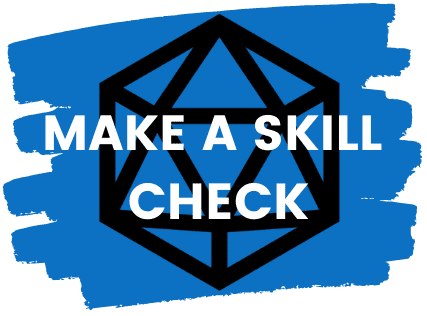On the go? Listen to the audio version of the article here:
As a D&D 5e player wondering about ways to spice up your gameplay, you may have considered feats (Player’s Handbook (PHB) pg 165). You might be wondering how to get these nifty abilities for your own characters. Getting feats in D&D 5e is easy, and here’s how:
There are currently only two ways to get feats in 5e. The first is to choose a feat instead of an Ability Score Improvement at set levels. The second is playing as a Variant Human. Variant Humans begin with a feat of your choice.
Getting feats is easy enough, but knowing when and why is more complicated. Are feats ever the better choice? What feats are the most ideal for your class? For more answers, read on!

Table of Contents
Are Feats Ever Better than Ability Score Increases (ASIs)?
Feats can bring nifty features and abilities into the game. However, feats aren’t better than ASI’s. In fact, characters that have chosen ASI’s exclusively are generally better than characters that choose only feats.
This is because ASI’s do you the favor of increasing your ability modifiers, which make your rolls more consistently high.
In Dungeons and Dragons, consistent success is key to survival.
Keep in mind that all classes perform better when their primary stat is at 20. For instance, the Spell Difficulty Class (DC) and Spell Attack Modifier for wizards are best when their Intelligence is at 20. In this case, wizards should always choose ASI’s over feats during the early levels.
When can you get feats?
Feats should be taken at higher levels—usually by the 3rd or 4th level, you will be offered an ability score improvement. This is so that you may use your first 2 ASI’s to max your primary stat to level 20.
All classes gain ASI/feats at the same levels, but Fighters and Rogues get more opportunities. The fighter gets 2 additional times, and the rogue gets 1.
Levels when you can take an ASI or Feat is as follows:
Why Take Feats?
One should get feats to either:
a.) Strengthen a playstyle and/or roleplay
b.) Compensate for weaknesses
Let’s say you’re playing a rogue in a campaign of political intrigue and espionage, and you want him to be an excellent spy and imposter.
The Actor feat (PHB p.165) will strengthen your skills to mimic others and thus make you a better spy. Roleplay and playstyle improved!
Now let us look at the other situation – compensating for weaknesses. Sorcerers, wizards, and bards have glaring weaknesses in their spell casting: concentration.
Concentration spells can be stopped through a poor constitution roll, and these classes cannot exploit opportunity attacks. Furthermore, they cannot wield a shield and sword while casting.
By choosing the War Caster feat (PHB p.170), these weaknesses are nullified. Now spellcasters can be a lot more confident in combat.
Looking to challenge your players?
Puzzles and Riddles can be tricky! Too easy and they’re pointless; Too hard and it’s pure frustration. What is a DM to do?
Well, our friends over at Dungeon Vault have an assortment of puzzles, riddles, and tokens to enhance your gaming experience. They even have a murder mystery and a political intrigue system!
For easy-to-use resources for any D&D game, check out the selections at Dungeon Vault!
What Are the Best Feats in 5e?
Now that you know how to get feats, you might be wondering which are the most worthwhile.
As of the writing of this article, there are currently 163 feats spread across 5 books.
The best feats in 5e are the ones that perform consistently, regardless of campaign type or DM’s preferences. Most of the feats in our best feats list will be focused on combat and spellcasting—two things present in almost every D&D game.
Just note that this list will avoid the racial feats introduced in Xanathar’s Guide to Everything. It’s not that they’re bad—they’re actually amazing—but racial feats work best on characters with specialized builds.
Now let’s get on with the list!
Lucky (PHB, pg 167)
Prerequisites: None
Lucky is (literally) one of the most fate changing feats. Lucky gives you 3 luck points. You may use your luck points to reroll any ability check, saving throw, or attack throw. When you need the odds to be in your favor during those important skill checks – Lucky is the way to go. Though not as powerful as specialized feats, Lucky’s general versatility makes it the best feat in the game.

Magic Initiate (PHB, pg 168)
Prerequisites: None
Magic Initiate allows a player to add spell casting to any class, though it only provides a first-level spell and two cantrips. A rogue with Find Familiar now has a convenient means to trigger traps or scout dungeons. A fighter who had trouble shooting ranged enemies may now learn eldritch blast.
Overall, an excellent feat to provide your characters with more tools.
Crossbow Expert (PHB, pg 165)
Prerequisites: None
Crossbow Expert allows frontline weapon classes (e.g., fighters and barbarians) to wield crossbows without issue. You break the limit of firing one shot per turn, can use it in close combat, and can use a hand crossbow in conjunction with a melee weapon.
War Caster (PHB, pg 170)
Prerequisites: The ability to cast at least one spell.
This feat is a must for all primary spell casters. Getting an advantage on Constitution saving throws means your concentration spells twice as resilient. In addition, you’re able to cast somatic spells even with weapons in hand, and you can cast spells when opportunity attacks are provoked. Overall, it allows spellcasters to play more aggressively.
Ritual Caster (PHB, pg 169)
Prerequisites: INT or WIS 13 or higher
Ritual Caster is a utility feat; gaining access to two 1st-level ritual spells is a major boon. Among the list, Find Familiar, Comprehend Languages, Detect Magic, and Tenser’s Floating Disk can be chosen to suit whatever you need.
Resilient (PHB, pg 168)
Prerequisites: None
Resilient isn’t the flashiest feat, but it is one of the stronger ones. Being able to increase a chosen ability score by 1 and gain proficiency in the appropriate saving throw is lifesaving. For fighters and barbarians that struggle with wisdom and intelligence saving throws, this feat is for you!
It’s particularly worthwhile when you realize, at higher levels, that a failed saving throw can literally be a life or death roll of the dice!
Summary
Getting feats is easy – all one has to do is choose a feat instead of an Ability Score Increase (ASI) at specified levels or play as a variant human.
Though getting a feat at the first opportunity is tempting, players should remember to plan their builds. Feats are fun and can greatly alter gameplay, but only when chosen at the right time.

Choose ASI’s first to max out your primary stat to 20 before getting feats.
The levels you can choose an ASI or Feat is as follows (fighters and rogues get 1-2 extra):
Lastly, feats should only be taken when they either strengthen your gameplay/roleplay or compensate for weaknesses.
With that, I hope you’re excited at getting your first (or next) feat the next time you level up!







0 Comments
Trackbacks/Pingbacks